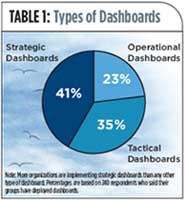It's pretty hard to be a developer these days and not think about security. But
many of us are having to catch up all of a sudden on the intricate and confusing
details of the Windows security infrastructure. Keith Brown's new book makes
learning what you need to know much, much easier.
From time to time I run across some situation where I think a little bit of
coding would make my life easier. Then I dash off and write a column instead.
Fortunately, other developers aren't so flaky. To start the new year, here are
five little utilities that you might find helpful.
The staff of Application Development Trends magazine look at new products of note.

According to Neil MacDonald, a Gartner vice president, who pieced together the research, the IT organization will shrink about 85 percent over the next decade. Combine that with analysts’ predictions that IT spending is growing at only a fraction of Gartner’s 25-year running average, and it’s easy to conclude that IT is disappearing, and that you should visit a career counselor.
Terry Schurter, an expert on business process management, is lead analyst for the Business Process Management Group (www.bpmg.org), a global BPM community. He believes IT will make great strides this year helping implement BPM in the enterprise.

The enterprise service bus promises to enable a service-oriented architecture and drive down the costs of enterprise application integration.

Process efficiency, management challenges, the nature of the projects and other factors have a lot to do with the success of offshoring and whether it provides financial benefits. Conversely, offshore providers and the infrastructure that support them are maturing, making offshoring less complex and risky than it was even a few years ago.
Borland’s JBuilder 2005 Enterprise is an all-Java IDE written by Java developers, for Java developers. This version targets enterprise developers with support for EJBs, Web services, XML, mobile, and database application development.
With burgeoning international competition for software work, there’s increasing interest among coders and those who hire them in figuring out which nation, if any, tends to provide superior skills. Subjective opinions abound...
Many vendors offer ADEs for building dashboards and scorecards. Some solutions are more canned than others, each prescribing a certain look and feel. However, others present developers with a flexible portal interface that they can populate and paint with substantial flexibility.
The major challenge in moving to ESBs is to change the existing programming paradigm. In addition to training programmers how to use the tools for ESBs, organizations must demonstrate the benefits of changing the way they deploy programs and manage them.
What leads to successful outsourcing?

Does anyone doubt the value of integrating applications? Once you have experienced the delay of re-entering information from one application into another, and the errors that typically result, you’re likely to be convinced about the payback from enterprise application integration (EAI) even though you probably can’t easily put a number to it. Still, if you’re a development manager and you’re proposing the purchase of an EAI tool, you can be sure management will demand an ROI analysis.
TDWI contacted data warehousing and business intelligence professionals in its database and 101communications’ database. (TDWI is a business unit of 101communications.) Of the 496 respondents, 473 were qualified to complete the survey.

A new report suggests analytic development environments will become the predominant method for building dashboards.

Everyone in IT recognizes the value of integrating applications. As Alan Radding writes in “Integration’s dividends,” the trick is proving it pays off. Why is building the ROI case for enterprise application integration such a challenge? The main reason is that the payoff is difficult to quantify in a way an accountant might understand. What’s it worth to improve customer service or streamline a critical business process? It’s hard to stick numbers on things like that.
Sivakumar, a Sri Lankan who now works in the U.S., recently published a book that attempts to provide a lighthearted but thought-provoking analysis of the global programming business. In Dude, Did I Steal Your Job? Debugging Indian Computer Programmers, Sivakumar recounts his experiences living and working in the U.S., and in which he offers a defense of Indian programmers.
According to Denny Morris of Parsippany, NJ-based Delta Services Corporation, successful offshore software development has five requirements.
With all the major server vendors planning to incorporate ESB capabilities into their core offerings within a few years, IT managers are wondering whether to jump in now with major ESB upgrades, or wait for the capability to show up in their new Microsoft or IBM servers with only the incremental cost to pay.